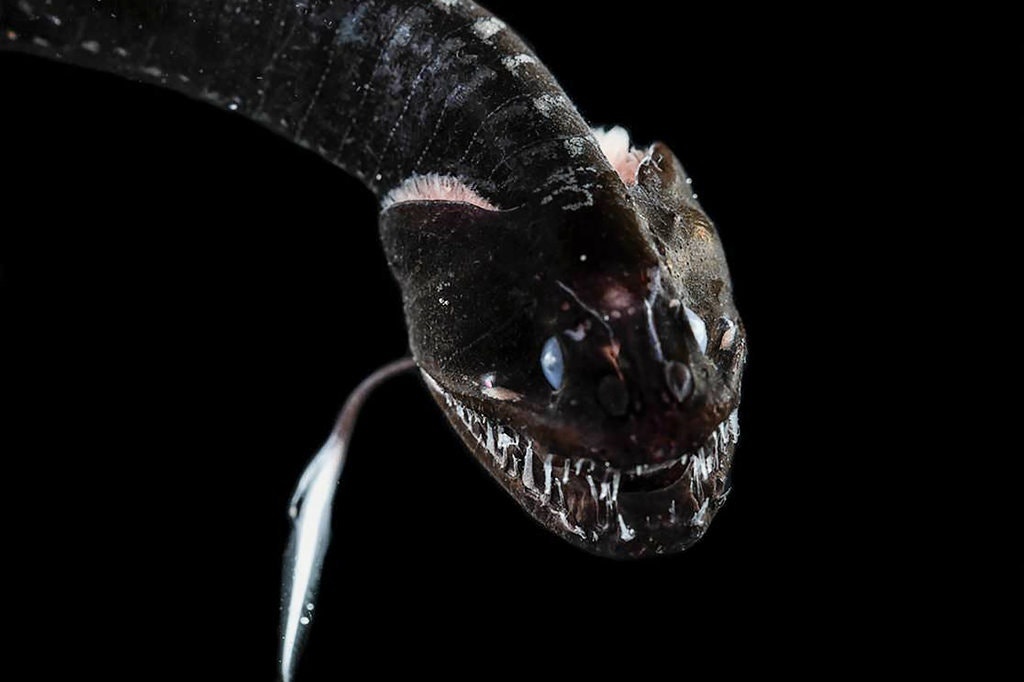Stunning fairy wrasse isn’t the fish scientists thought it was

- The fish was found in the virtually unexplored “twilight zone” reefs off the coast of the Maldives.
- The rose-veiled fairy wrasse is the first species in the Maldives to be classified by a local scientist.
- The identification of new species is a boon to both zoology and conservation efforts.
A stunning rainbow-colored fairy wrasse found off the coast of the Maldives isn’t the fish scientists thought it was. Rather than being an adult version of another fish, it is a unique species all its own — a discovery that could help protect both species.
Family resemblance
In the 1980s, researchers discovered a fish they hadn’t seen before near the Chagos Archipelago, a group of islands about 620 miles south of the Maldives in the Indian Ocean. Based on a juvenile specimen, they classified this fish as a new species: Cirrhilabrus rubrisquamis, or the rosy-scales fairy wrasse.
Then, in the 1990s, another new fish was discovered, this time in the virtually unexplored “twilight zone” reefs, off the coast of the Maldives. Based on that fish’s appearance, researchers determined that it was the adult version of the rosy-scales fairy wrasse.
It turns out they were wrong.
“Describing new species is important for conservation and biodiversity management.”
Yi-Kai Tea
Scientists from the California Academy of Sciences, the University of Sydney, the Maldives Marine Research Institute (MMRI), and the Field Museum recently teamed up to study the Maldives fish in more detail, examining its genes, coloring, fin height, scale quantity, and more.
After comparing that data to what they knew about the rosy-scales fairy wrasse, they determined that the Maldives fish is a unique species. So, they have now given it a name — Cirrhilabrus finifenmaa, or the rose-veiled fairy wrasse — and published a paper on it in the journal ZooKeys.
Limited range
Based on this new research, instead of having one species with a geographic range that extends from the Chagos Archipelago to the Maldives, we now have two species with much more restricted ranges.
This is important information for conservationists because — even though both types of fairy wrasse are quite abundant right now — species with smaller ranges are generally at greater risk of extinction.
“It has always been foreign scientists who have described species found in the Maldives without much involvement from local scientists.”
Ahmed Najeeb
It’s sort of like the “having all of your eggs in one basket” analogy — if an entire species occupies just one small part of the world, any disruption to that environment has the potential to decimate its numbers.
“This exemplifies why describing new species, and taxonomy in general, is important for conservation and biodiversity management,” said lead author Yi-Kai Tea from the University of Sydney.
Think local
Conservation is not the only reason the classification of this new wrasse species is noteworthy. Although the Maldives is home to hundreds of fish species, the rose-veiled fairy wrasse is the first to be classified by a local scientist.
“It has always been foreign scientists who have described species found in the Maldives without much involvement from local scientists, even those that are endemic to the Maldives,” said study co-author Ahmed Najeeb from the MMRI. “This time it is different and getting to be part of something for the first time has been really exciting, especially having the opportunity to work alongside top ichthyologists on such an elegant and beautiful species,” he continued.





